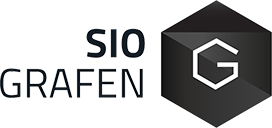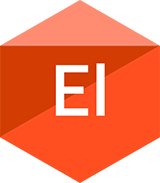Grafenbaserade flexibla och återvinningsbara ljuskällor för livsvetenskapliga applikationer

Syfte och mål
LunaLEC tillverkar ljuskällor och har flera befintliga kunder som vill integrera tunna, lätta och billiga ljusfilmer i sina befintliga medicinska produkter. Ljuset stimulerar celler och förkortar behandlingstiden.
För att kunna skala upp tillverkningen av ljuskällorna är det avgörande att LunaLEC identifierar en lösningsbaserad elektrod som kan ersätta nuvarande metallelektrod, vilken idag tillverkas genom termisk förångning av aluminium. Denna tillverkningsmetod är energiintensiv och långsam och är just den flaskhals som förhindrar tillverkning av ljuskällor i större skala, då alla andra tillverkningssteg redan sker med uppskalbar tryckteknik. LunaLEC har tillsammans med Thomas Wågberg tillverkat sulfonerad grafenoxid samt fluorinerad grafen och har därmed identifierat två grafenmaterial som kombinerar hög elektrokemisk stabilitet med hög dispersionsgrad. Dessa grafenmaterial är mycket lovande som elektroder i LunaLECs komponenter, och kan möjliggöra komplett rulle-till-rulle-tillverkning av lysande plastark.
Genomförbarhetsstudien har syftat till utvärdera resursbehov samt identifiera ytterligare eventuella partners, för att genomföra ett 3-årigt projekt. Detta skulle ha gett oss ett bättre underlag för hur vi bäst ska genomföra detta kritiska utvecklingsmoment. Genom att vara väl förberedda och ha bra kunskap om vad vi måste uppnå, hoppades vi på att kunna introducera vår teknologi på marknaden 2020. Målet var att ta fram underlag och ett team för att genomföra ett större FoU-projekt med grafen som en viktig beståndsdel. Tre olika aspekter skulle verifieras:
- Utförande av tidiga prototyper
- Identifiering av utvecklingsresurser
- Bekräftelse av personella och finansiella resurser från kunder
Effekter och resultat
- Olika prototyper av grafenelektroder har utvecklats. Dessa kan användas i ljusemitterade elektrokemiska celler för både livsvetenskapliga applikationer och andra stora ytor där hållbarhetsaspekten är av stor vikt.
- De interna förberedelserna lyckades. Vi tog fram ett team från LunaLEC, Umeå Universitet och Nano for Energy som skulle kunna fortsätta att utveckla elektroderna till en färdig produkt för de tilltänkta kunderna.
- Vi misslyckades med att få externa parter att säkra internt stöd för deras del av projektfinansieringen. LunaLEC och Nano for Energy kommer därför inte att ansöka om ett FoU-projekt inom SIO Grafen hösten 2018, men kommer att fortsätta utvecklingen på egen hand.
Projektet lyckades definiera flera applikationer där återvinning är viktigt för kunderna. Dessutom har vi testat ett antal angreppssätt för att använda grafen som katod, vilket gör framtida utveckling mer fokuserad. Projektet har legat till grund för fortsatt produktutveckling för både Nano for Energy och LunaLEC.
Nano for Energy har fortsatt testa ett flertal grafen- och grafitmaterial i olika former, för att ta fram de bästa förutsättningarna för ett större projekt. Fokus har legat på att erhålla grafen med lägre funktionaliseringsgrad och därigenom en högre konduktivitet men med bibehållen dispersionsförmåga. De två större internationella kunderna, som visat intresse för att delta i det stora FoU-projektet, definierade parametrar för att gå vidare i projektform.
LunaLEC har skickat prototyper baserade på traditionella elektrolyter för att demonstrera vad vi skulle kunna åstadkomma i ett projekt, som skulle syfta till att göra produkter baserade på grafen för att öka graden av återvinning. Kunderna har varit mycket restriktiva med att dela med sig av specifika krav på produkterna. Vad gäller medtech är det fortfarande svårt att få in extern kunskap även med tecknade sekretessavtal, då denna info är kritisk för framtida produkter hos bolagen. LunaLEC har däremot fått en mycket bättre förståelse för ytterligare applikationer, både med och utan grafen som beståndsdel.



